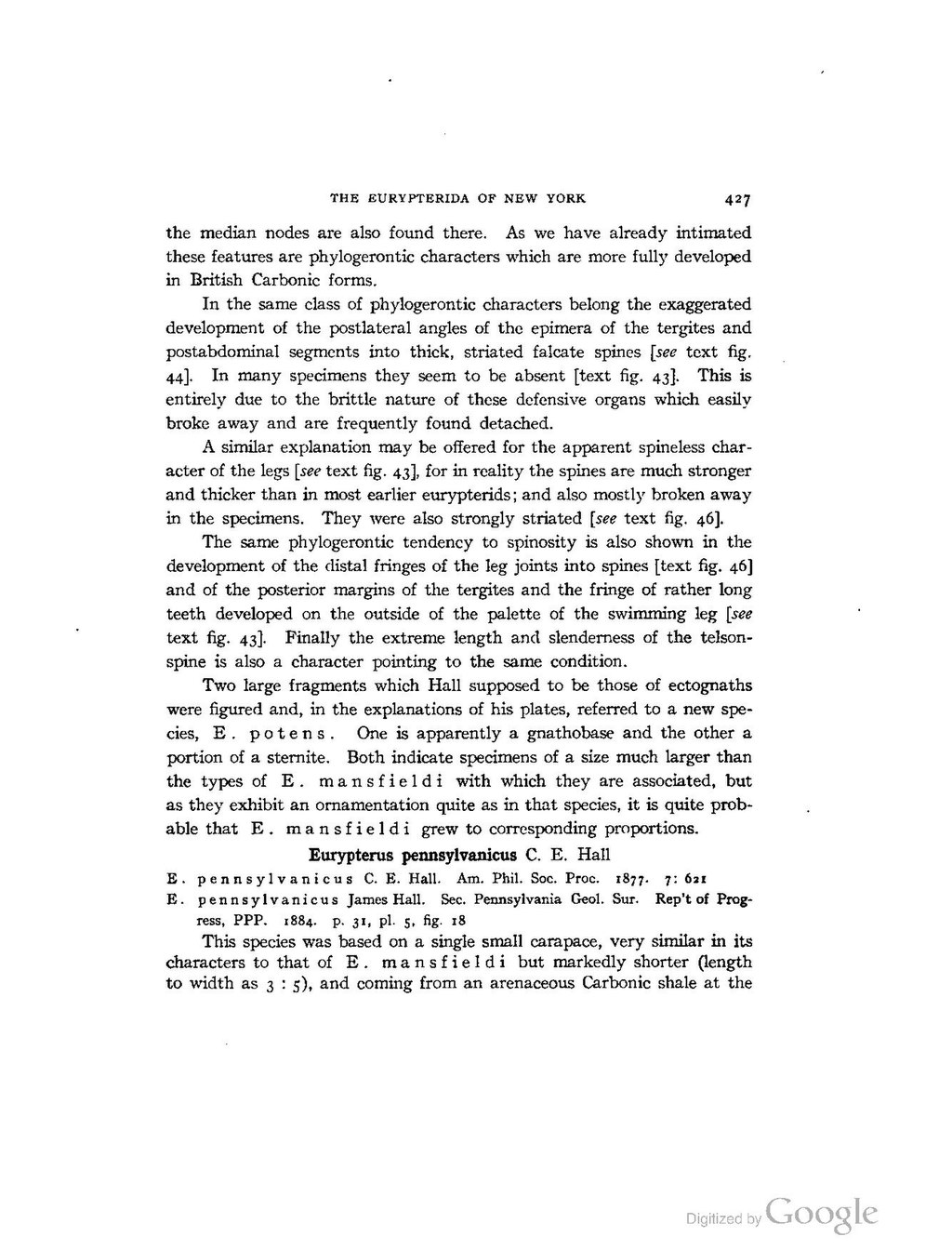the median nodes are also found there. As we have already intimated these features are phylogerontic characters which are more fully developed in British Carbonic forms.
In the same class of phylogerontic characters belong the exaggerated development of the postlateral angles of the epimera of the tergites and postabdominal segments into thick, striated falcate spines [see text fig. 44]. In many specimens they seem to be absent [text fig. 43]. This is entirely due to the brittle nature of these defensive organs which easily broke away and are frequently found detached.
A similar explanation may be offered for the apparent spineless character of the legs [see text fig. 43], for in reality the spines are much stronger and thicker than in most earlier eurypterids; and also mostly broken away in the specimens. They were also strongly striated [see text fig. 46].
The same phylogerontic tendency to spinosity is also shown in the development of the distal fringes of the leg joints into spines [text fig. 46] and of the posterior margins of the tergites and the fringe of rather long teeth developed on the outside of the palette of the swimming leg [see text fig. 43]. Finally the extreme length and slenderness of the telsonspine is also a character pointing to the same condition.
Two large fragments which Hall supposed to be those of ectognaths were figured and, in the explanations of his plates, referred to a new species, E. potens. One is apparently a gnathobase and the other a portion of a sternite. Both indicate specimens of a size much larger than the types of E. mansfieldi with which they are associated, but as they exhibit an ornamentation quite as in that species, it is quite probable that E. mansfieldi grew to corresponding proportions.
Eurypterus pennsylvanicus C. E. Hall
E. pennsylvanicus C. E. Hall. Am. Phil. Soc. Proc. 1877. 7: 621
E. pennsylvanicus James Hall. Sec. Pennsylvania Geol. Sur. Rep't of Progress, PPP. 1884. p. 31, pl. 5, fig. 18
This species was based on a single small carapace, very similar in its characters to that of E. mansfieldi but markedly shorter (length to width as 3 : 5), and coming from an arenaceous Carbonic shale at the
